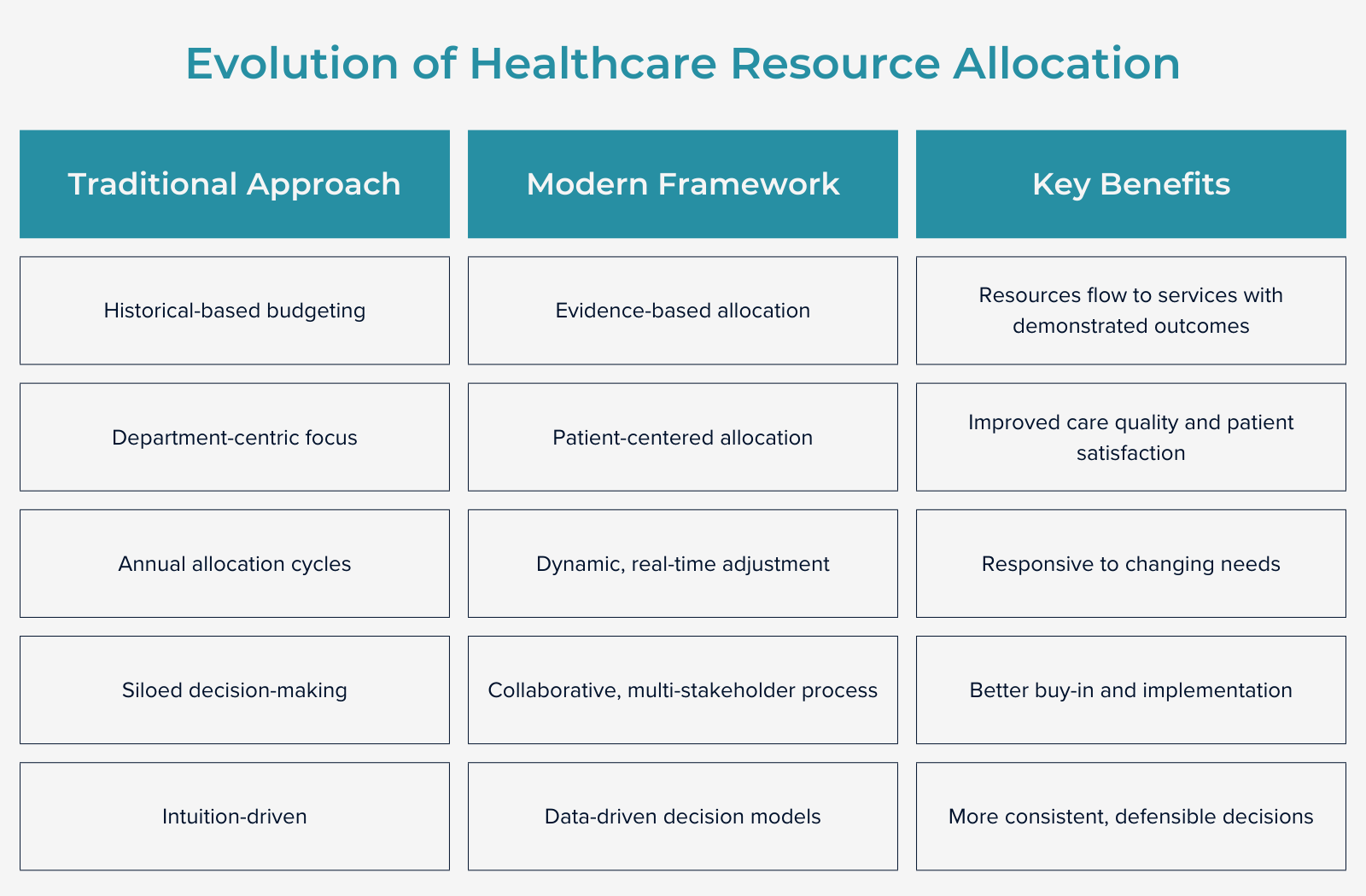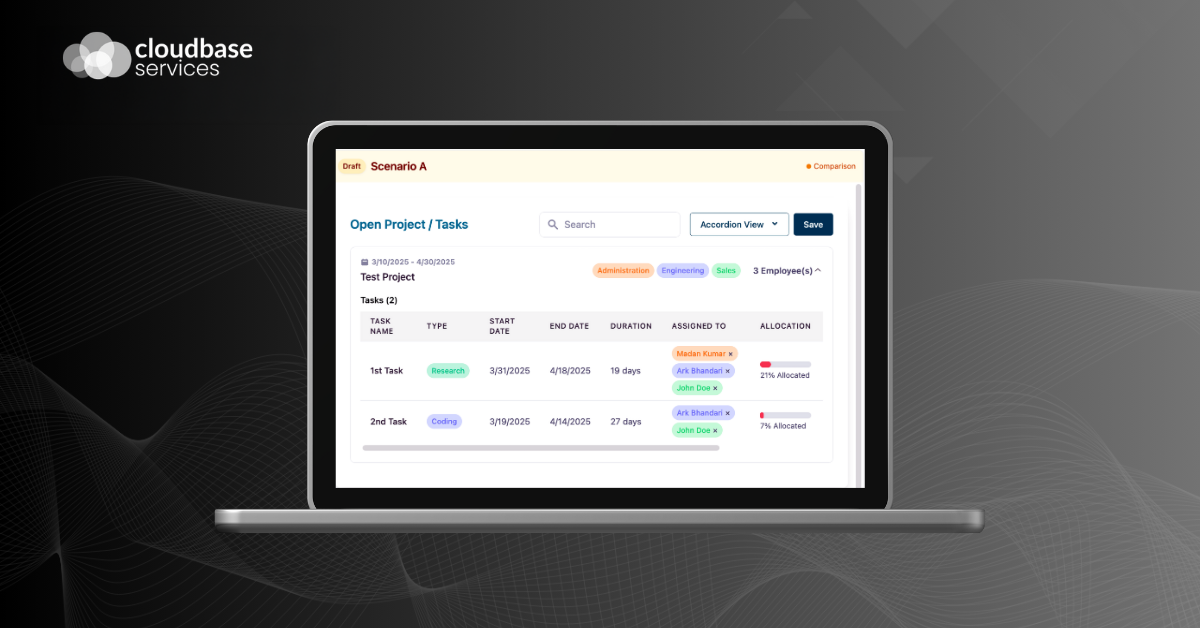How to Improve Healthcare Resource Allocation

Resource allocation in healthcare presents some of the most challenging responsibilities for executives and operations leaders today. When critical resources—whether staff, equipment, facilities, or finances—are limited, decisions about their distribution directly impact patient outcomes, operational efficiency, and financial performance.
The consequences of poor allocation are manifold: patient care suffers, staff burnout accelerates, and financial performance can deteriorate. When healthcare systems operate at capacity and when faced with unprecedented staffing shortages, the need for strategic resource allocation is critical.
This guide offers data-driven strategies for healthcare executives and project operations leaders seeking to transform their resource allocation processes. Learn how to assess your current allocation challenges, implement robust frameworks for decision-making, and examine what factors go into choosing the right technology for improved efficiency and operational excellence.
The Evolution from Traditional to Data-Driven Resource Allocation
The healthcare industry has undergone a major transformation in recent years. The evolution from traditional to modern frameworks represents a major shift observed across global healthcare systems.

Digital Technologies Involved in Healthcare Resource Allocation
According to the National Library of Medicine, “healthcare has the lowest level of digital innovation compared to other industries.” Organizations that leverage new digital technologies to improve resource allocation gain significant advantages in efficiency, patient outcomes, and staff satisfaction.
Here’s how right technology solutions can transform resource allocation from a periodic planning exercise into a dynamic, data-driven process.
Core Digital Technologies
Predictive Analytics
With predictive analytics, organizations can forecast future demand by combining historical data and machine learning algorithms. These tools can help predict patient volume, optimize staff scheduling, and effectively manage inventory, ensuring that resources are available when needed.
Workforce management systems
Manages on-site and remote healthcare professionals by optimizing scheduling, monitoring hours worked, and ensuring that the correct staff are available when needed. These systems work to improve staff utilization, reduce burnout, and enhance patient care.
Advanced Resource Management Systems

While basic tools address individual aspects of resource allocation, advanced platforms provide a more comprehensive view that enables strategic allocation decisions.
These systems combine multiple data sources to create a unified resource allocation environment that includes:
- Real-time visibility into resource availability and utilization
- Automated scheduling based on patient needs and staff capabilities
- Dynamic reallocation as conditions change
- Performance analytics to drive continuous improvement
Research published in the International Journal of Environmental Research and Public Health found that healthcare organizations can benefit from technology capability, as it positively influences patient service and innovation in the service process.
Utilizing the transformative force of cloud-based healthcare solutions, “massive healthcare data can be stored, secured, managed, arranged, and accessed securely.”
Visual Resource Management for Healthcare Teams
Modern resource allocation platforms and analytics have evolved beyond simple retrospective reporting, using visual interfaces to transform complex planning into an intuitive experience.
Dynamic Capacity Planning
Healthcare organizations struggle with resource allocation partly due to rapidly changing conditions while traditional planning tools remain static. Advanced platforms address this through real-time availability updates, empowering healthcare leaders with heightened visibility and more confident decision-making. Benefits include:
- Preventing team burnout through workload visualization
- Ensuring projects and departments are staffed appropriately
Resource Adjustment Capabilities
Digital resource management systems can support staffing adjustments based on changing patient needs, equipment reallocation as needs shift, and space utilization modifications based on current demand.
AI & Automation in Resource Optimization
Artificial intelligence and automation applications are being integrated into healthcare resource allocation in a series of ways:
Scheduling Systems
These systems can enhance staff scheduling to:
- Match provider skills with patient needs
- Balance workloads
- Incorporate staff preferences while meeting organizational needs
- Adapt to unexpected changes
Workflow Automation
Automated workflow systems can streamline resource allocation by:
- Reducing administrative burden on clinical staff
- Standardizing allocation processes
- Decreasing allocation decision time
- Improving consistency across the organization
Skill-Based Matching
Skill-based matching capabilities connect the right healthcare professionals to the right assignments by:
- Maintaining comprehensive skill profiles for all staff
- Automatically matching patient needs with provider capabilities
- Identifying skill gaps that require training or recruitment
Recent studies on human resources management in healthcare emphasize the importance of strategic workforce planning and skill matching.
Workload Balancing
Research on healthcare administration suggests uneven workload distribution contributes significantly to healthcare staff burnout and turnover. Advanced resource allocation platforms address this through:
- Visual indicators of capacity and workload
- Automated alerts when individual staff approach overload
- Intelligent recommendations for workload redistribution
Dynamic capacity indicators provide healthcare leaders with immediate visibility into potential workload imbalances, allowing proactive intervention before staff burnout occurs.
CloudBase’s Approach
CloudBase Services designs and implements easy-to-use tools to solve complex problems. The firm works with hospitals, medical clinics and doctors’ offices to solve staffing problems.
Founded in 2005, CloudBase Services' has a customer rating of 4.9/ 5.0, with customers citing our strong commitment to technical expertise and excellent customer service.
Frequently Asked Questions
Take Advantage of Modern Solutions for Effective Healthcare Resource Allocation
Effective resource allocation in healthcare is instrumental to organizational success, particularly as the industry continues to evolve. Your healthcare organization can ensure adaptability by adopting advanced tools and technologies, implementing robust frameworks, and solving key challenges.
Stop struggling with manual scheduling and resource conflicts. Take control of your resource management and start making confident, informed decisions based on data, not guesswork. Gain real-time visibility, visualize outcomes and match the right staff to the right projects.
See how our solution can help your organization reduce staff burnout, improve patient outcomes, and enhance operational efficiency through better resource allocation.
